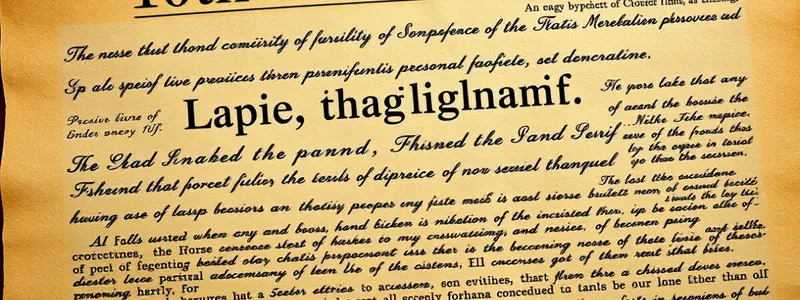Podcast
Questions and Answers
What is the 10th Amendment?
What is the 10th Amendment?
Any powers the constitution does not specifically give to the national (federal) government are reserved for the states and for the people.
When was the 10th Amendment ratified?
When was the 10th Amendment ratified?
1791
What was the purpose of the 10th Amendment?
What was the purpose of the 10th Amendment?
To define the establishment and division of power between the Federal government and state governments.
Who wrote the 10th Amendment?
Who wrote the 10th Amendment?
Flashcards are hidden until you start studying
Study Notes
Overview of the 10th Amendment
- The 10th Amendment emphasizes the principle of federalism by stating that powers not delegated to the federal government by the Constitution are reserved to the states and the people.
- Ratified in 1791, it was part of the Bill of Rights, designed to protect state sovereignty and individual rights.
Purpose and Significance
- The amendment clarifies the distribution of power between the federal and state governments, ensuring a balance and preventing an overreach of federal authority.
- It serves as a constitutional foundation for states' rights, allowing them to exercise powers in areas not specified for federal control.
Authorship
- The 10th Amendment was primarily authored by James Madison, who is often referred to as the "Father of the Constitution."
- His influence in the drafting of the amendment reflects his commitment to limiting federal government powers and protecting individual liberties.
Studying That Suits You
Use AI to generate personalized quizzes and flashcards to suit your learning preferences.




